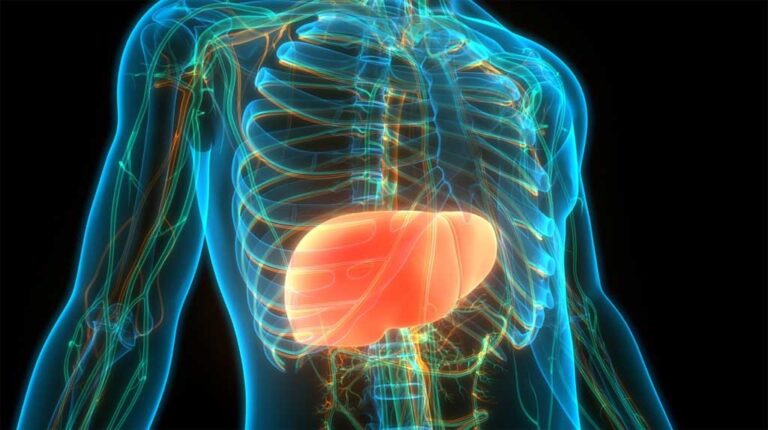Researchers at Michigan Medicine developed DT-109, a glycine-based tripeptide, to treat the severe form of fatty liver disease called nonalcoholic steatohepatitis (NAFLD). More commonly known as NASH, the disease causes scarring and inflammation in the liver and is estimated to affect up to 6.5% of the global population.
Results reveal that DT-109 reversed fat buildup and prevented scarring in the livers of both mice and primates that had developed NASH. The study, completed in partnership with an international team including the Laboratory Animal Center at Xi’an Jiaotong University Health Science Center and the Institute of Cardiovascular Sciences at Peking University Health Science Center, is published in Cell Metabolism.
“For years, scientists have been trying to develop a medication that treats NASH, but many attempts have failed to show an improvement or have raised safety concerns in clinical trials,” said Eugene Chen, M.D., Ph.D., senior author of the study and Frederick G. L. Huetwell Professor of Cardiovascular Medicine at University of Michigan Medical School.
“NASH is rising at a staggering rate, and successful treatment of non-human primates with our drug candidate, DT-109, brings us closer than ever to treating the millions of people suffering from this condition.”
NASH is the second stage of nonalcoholic fatty liver disease, which is estimated to affect 32% of people worldwide. While fatty liver disease can be treated with exercise and nutritional intervention, the liver damage from NASH is more permanent. It has become the primary cause of chronic liver disease, and NASH-related cirrhosis is now one of the most common reasons for liver transplantation.
While hundreds of compounds have successfully treated NASH in mice, including DT-109, Chen says mouse NASH models are limited because not all aspects of the human disease are accurately mimicked and, therefore, are not easily translatable to the clinic. The research team’s non-human primate model for NASH, confirmed using multiomics profiling studies, is among the first to accomplish the feat.
“With this significant breakthrough in preclinical models, we can now consider evaluating DT-109 as a potential drug candidate for the treatment of NASH in future clinical trials,” said Jifeng Zhang, Ph.D., co-corresponding author and research associate professor of cardiovascular medicine at Michigan Medicine. “With millions of people suffering from NASH, the need for an effective treatment is more pressing than ever.”
pll/mem/joe










